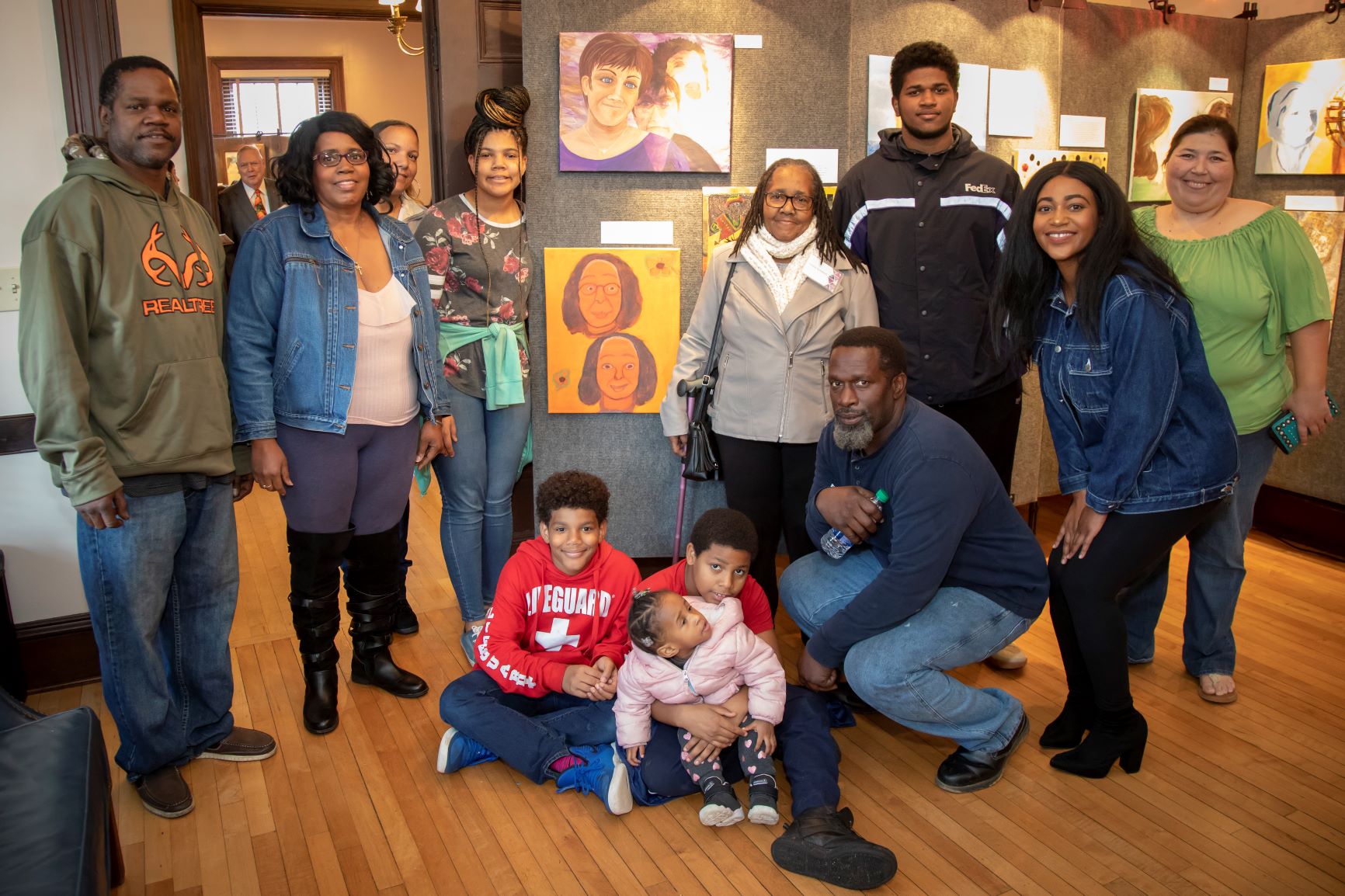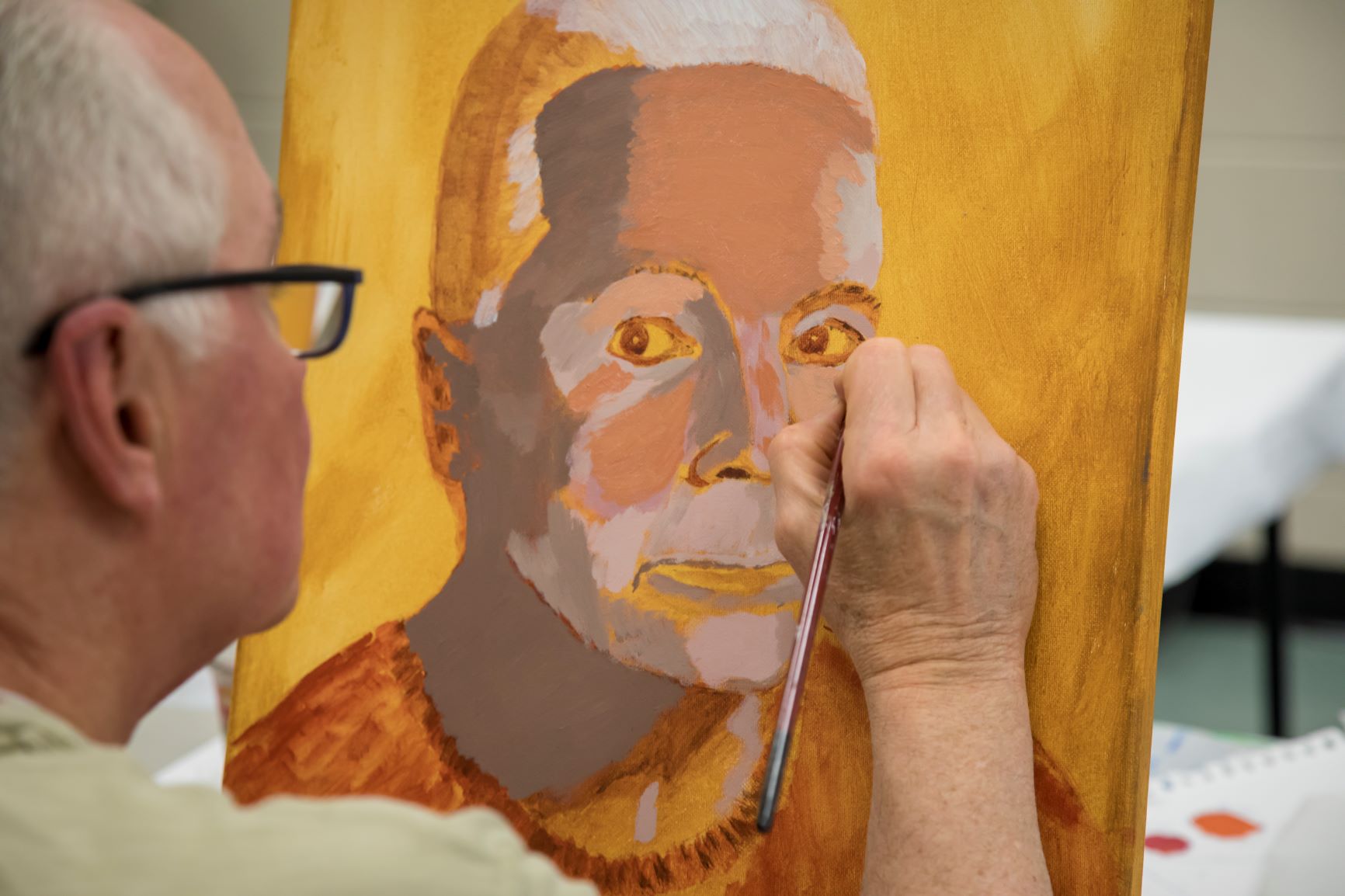Pullen Art Center’s Creative Aging Programs
Today on the Blog, Eliza Kiser shares the reasoning, design and implementation of the Pullen Arts Center’s creative aging programs in Raleigh, North Carolina.


Pullen Arts Center creative aging participants. Photo credit: Teresa Moore
With a small but remarkable team, I serve my community as Director of Pullen Arts Center, a community visual arts center providing high quality, affordable visual arts classes and studio access in Raleigh, North Carolina under the umbrella of Raleigh’s Parks, Recreation and Cultural Resources Department.
When we began our journey into creative aging programming, by way of the National Guild for Community Arts Education’s 2017/18 Catalyzing Creative Aging Seed Grant program, here’s what we knew:
- As a municipal arts organization, we are committed to serving all of Raleigh’s citizens.
- Anecdotally, we observe 40 – 50% of our students falling in the broad spectrum of retirees from 55 – 95 years old, with our weekday morning and afternoon classes dominated by this age group.
- We work to achieve the “Creative Life” vision set for us by the community in the 2015 Raleigh Arts Plan: “Raleigh is a community connected through arts and culture, where every person is empowered to lead the creative life they envision.”
- The 2010 census indicates that approximately 16% of Raleigh’s 450,000 citizens are age 55 or older.
- The 2017 Raleigh Community Profile lists Baby Boomers as a growing segment of the population in Raleigh.
- Our 2014 Parks System Plan predicts that Baby Boomers will likely “age in place” in Raleigh due to climate and amenities, and the Parks, Recreation and Cultural Resources Department will have to carefully and creatively consider approaches to keeping these citizens active and engaged as they age.
In the Seed Grant, we saw an opportunity to take what we already did well, make it better and more intentional, build capacity to support creative aging across multiple roles in our organization, and to collect data that would lead us to wherever the next right place in supporting older adults in our community might be.
As a part of the Catalyzing Creative Aging Seed Grant, we received ageism and creative aging training, technical assistance in developing an ageism training for our organization, technical assistance in building the curriculum for our program, and funding to support the production of our 2018 creative aging program.
We called our program “Who are we? Raleigh’s People in Portraits.” Over 12 weeks, students learned the technical skills to draw and paint the human face, explored different historical and contemporary approaches to portraiture, and ultimately learned to tell a story about themselves by producing their own self-portrait to display in a culminating exhibition.
Because our physical space has been closed since November 2017 for a massive renovation and expansion, we’ve produced our creative aging programming in community centers throughout Raleigh’s geography. In Fall 2018, 60 older adults met in four locations with four different teaching artists; in Fall 2019, 83 older adults met in six locations with five different teaching artists.
If you were a student walking into one of these classes on the first day, here’s what you would experience:
You would walk into a community center not far from home – maybe it’s a community center where you already take yoga, drop off your grandkids at camp, attend community meetings, or go to vote. You’d find yourself among 10 – 15 other older adults, most of whom also have not participated in arts programs since high school. All of the art materials you might need would be there for you to use, along with a sketchbook for you to take home to practice and record your ideas. Your instructor is a professional teaching artist who cares about making sure that you are included, that your needs are met, and that you are supported in expressing yourself creatively.
After 12 weeks of the program, here’s what my team and I experience:
Utter joy and pride.
Some students have completed one portrait; some have created multiples. As we wire and organize the paintings into groupings, we find themes that tie together portraits of students in different classes who have never met one another. We hang each piece, print and alphabetize each artist’s name tag, send out the press releases, make last-minute changes to artists statements, and work with those two or three students who are going to complete and bring in their work hours before the opening to make sure everything looks good. When we unlock the doors to the exhibition space – a historic home in the center of the city – we see magic. We see kids, grandkids, neighbors, friends, co-workers, coming out in droves to support their artist (with 300 visitors attending 2019’s opening reception!). We see students getting lost in conversation with someone from another class whose work explored the same experience or feeling.
Throughout my life and through these creative aging programs, I’ve had the good fortune to be surrounded by many people whose lives have served as positive examples of how people get better, more complex, more confident, more joyful and less worried with age. I saw, but until recently couldn’t name, the disconnect between the way I saw people aging on television and the way I saw people aging around me — ageism.
Until we had the opportunity to consider, understand and challenge ageism with the help of Lifetime Arts, ageism was off both my personal radar and my organization’s radar. What I learned is that ageism is very real, even in places that are successfully serving older adults, and it lurks from the parking lot to the program menu and bleeds into classroom interactions and onto the gallery walls. Ageism robs organizations like mine of the ability to see the individual strengths, skills, and needs of the people we’re serving; it robs us of the opportunity to create and be community.
When we started talking about ageism, our organizational storytelling began to shift in a way that’s proving transformational:
Our previous storytelling had focused on the art and the making. Now, our storytelling is focused on the artist and the maker.
Lately, I’ve been embracing my inner local government nerd-self and reading the writings of North Carolina’s Governor of the early 1960s – Terry Sanford. His core beliefs about people ring true and relevant to me in the context of making the case for Creative Aging; in his 1966 book “But What About The People” Sanford asks, “In one place after another all across the nation, we have come to realize that we cannot afford to waste our soil and rivers and woodlands. But what about our human resources? What about the people?”
Pullen Arts Center is a municipal organization, and, as such, our responsibility is serving our community. This program allowed us to discover a deeper, better way to serve by allowing us to see and understand the assets of our older adult students and to remind them and others how much they have to learn, to give, and to accomplish.
One of my most important possessions is a pair of glasses that belonged to my grandfather. He was always imagining the world that he wanted for his children, his grandchildren and his community. And, through those lenses, he could always see an opportunity to get closer to this world he imagined.
When I peek through those lenses, here’s the truth and opportunity I see:
Age comes with the gifts of stories, meaning, and context. Sharing the meaning we find along the way with others helps us build together a community that’s for everyone.
This blog post was written by Eliza Kiser, Director of Pullen Arts Center.